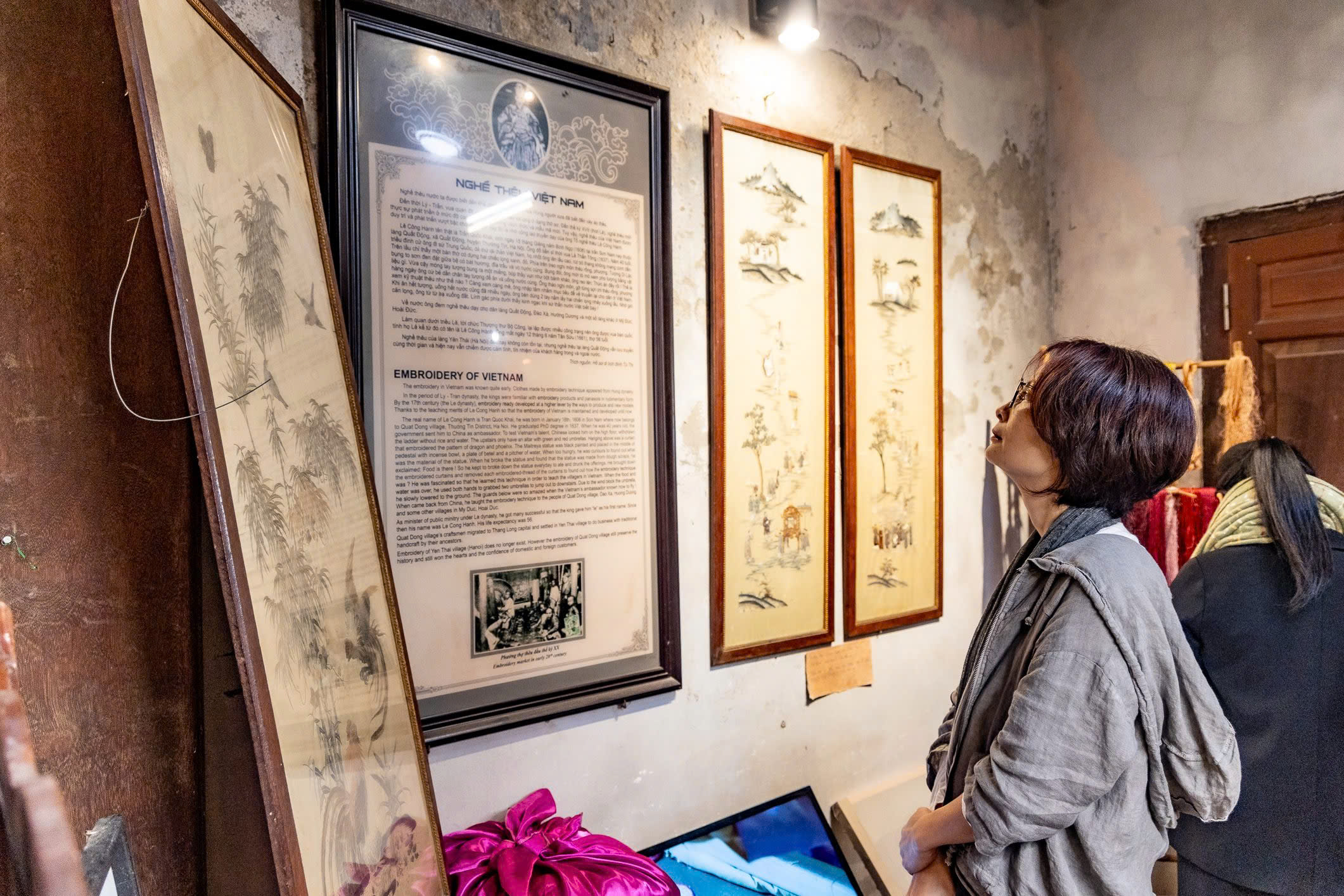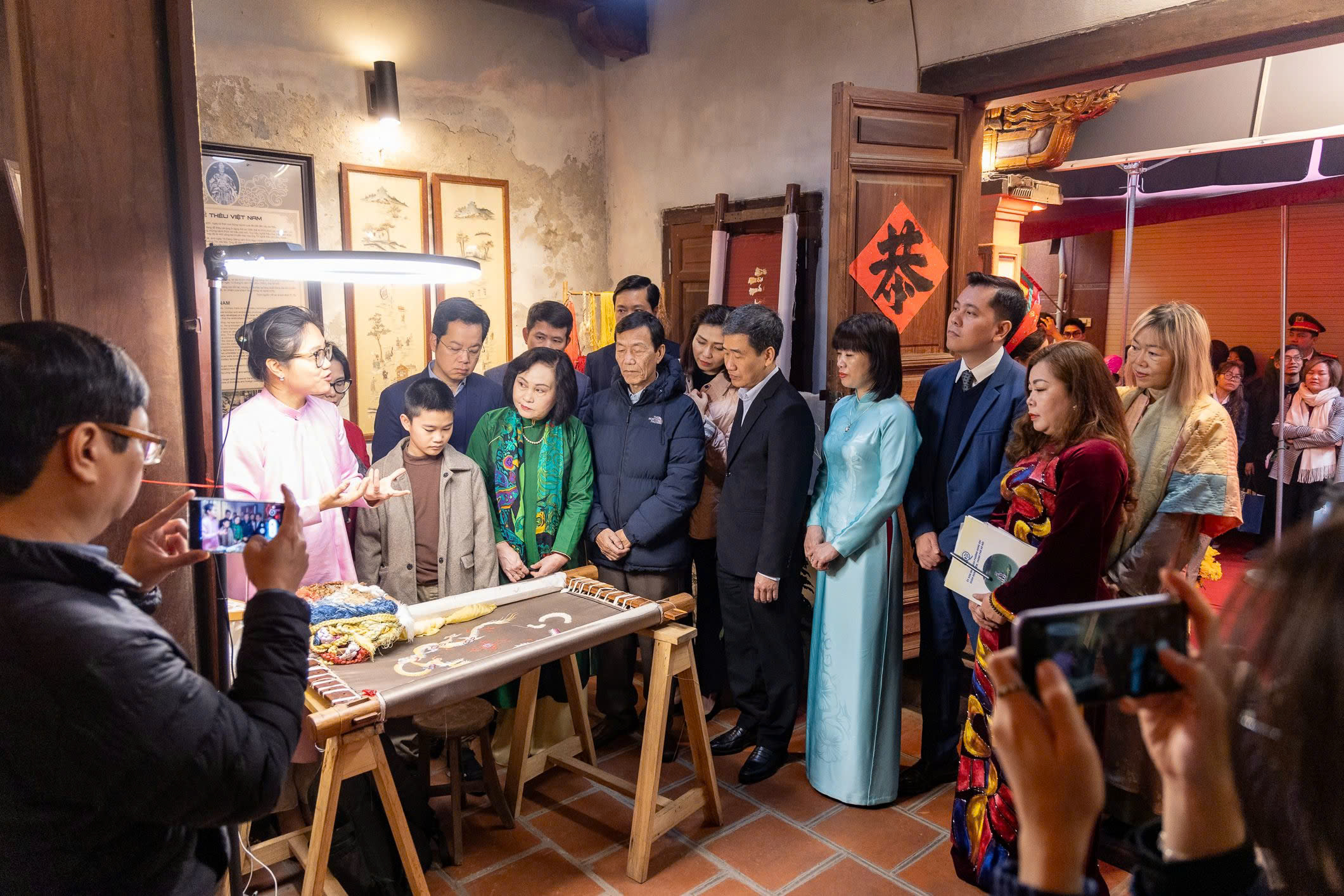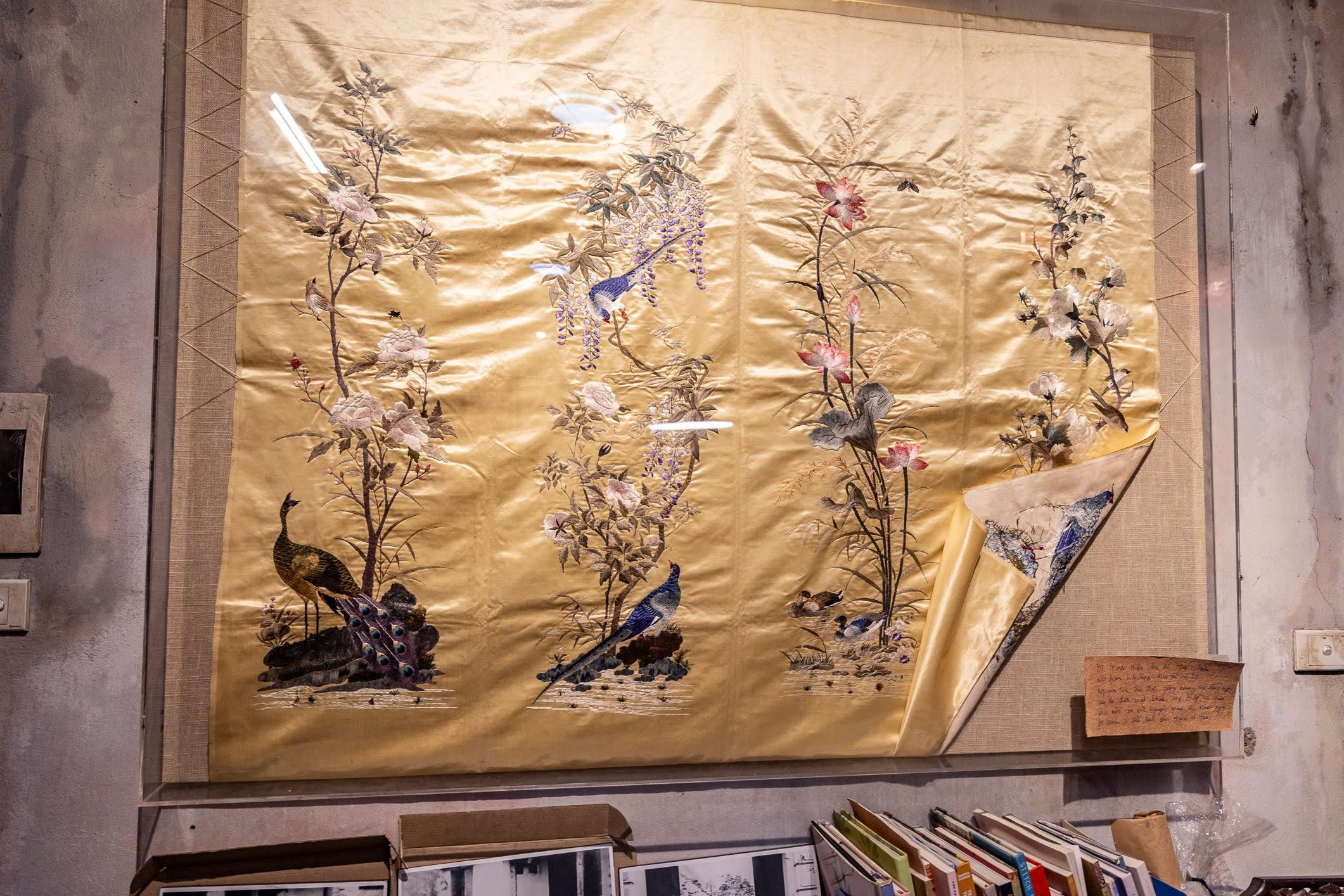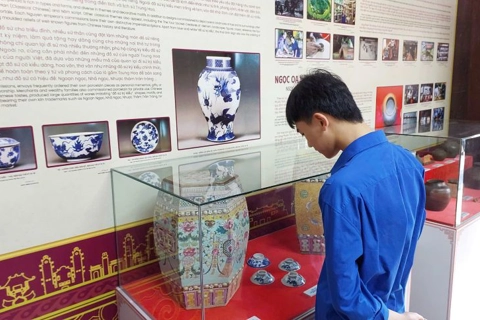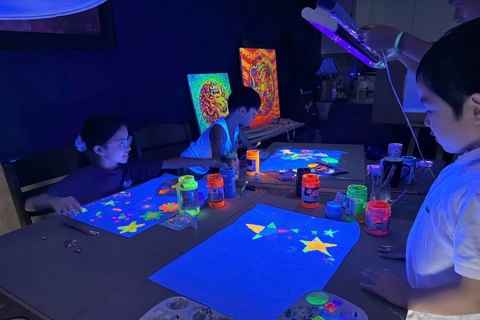Hanoi visitors experience hand embroidery in downtown Hanoi
The event is held at Tu Thi Temple in Hang Gai Ward, Hoan Kiem District, Hanoi.
Hanoi residents and tourists had the opportunity to join the hand embroidery experience and explore the history of Tu Thi Temple and the hand embroidery community in Hoan Kiem District, Hanoi.
| A visitor to the event. Photos: The People’s Committee of Hoan Kiem District |
This event was part of the incense offering ceremony to commemorate the 419th anniversary of the birth of Le Cong Hanh (1606 - 1661), the founding father of embroidery, on February 12.
Visitors can admire a 100-year-old Indochina-era embroidered artwork depicting the four seasons that was bought back from an auction and returned to Vietnam for display. It is part of the collection of artist Pham Ngoc Tram. The audience also witnessed demonstrations of the artist's unique embroidery techniques.
Speaking at the event, Nguyen Manh Linh, Chairman of Hang Gai Ward People's Committee, said this activity is part of the project "Artist Residency: Shimmering Silk - Color of Nature". For the past month, the artist has been demonstrating embroidery techniques at the temple, creating a space for interaction between artists, local residents, students, and tourists.
The event also included the art exhibition and residency program, which offered eight weeks of creative activities, exchange sessions, and workshops at Tu Thi Temple.
| Artist Pham Ngoc Tram introduces visitors to unique embroidery techniques. |
This temple is dedicated to Le Cong Hanh, a native of Quat Dong Embroidery Village in Thuong Tin District, Hanoi, who played an important role in the creation and development of embroidery in Vietnam.
Built in 1891 by the people of Quat Dong, it was declared a national heritage site in 2015.
Part of the temple area has become a center for cultural exchange and preservation of embroidery skills, honoring the heritage of the craft and introducing traditional art to younger generations and visitors.
Hang Gai Ward has in recent times organized a number of traditional handicraft exhibitions to present this valuable cultural heritage to tourists.
Tu Thi Temple is expected to develop into a vibrant cultural and artistic space that encourages artists to create hand-embroidered works, contributing to the preservation and promotion of traditional crafts while fostering sustainable cultural and economic development.
| The Indochina-era embroidered artwork depicting the four seasons was repurchased from an auction and returned to Vietnam for display. |

